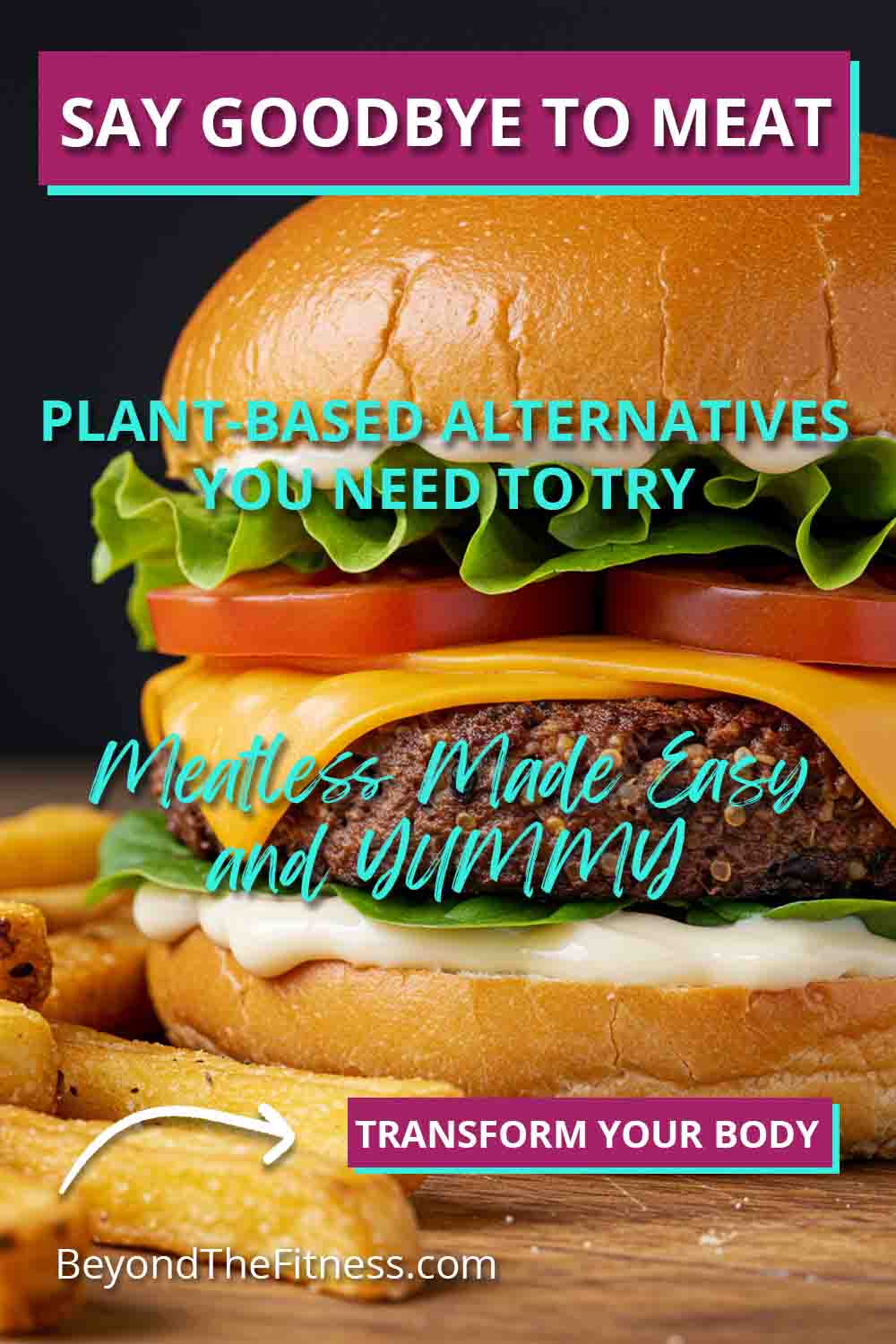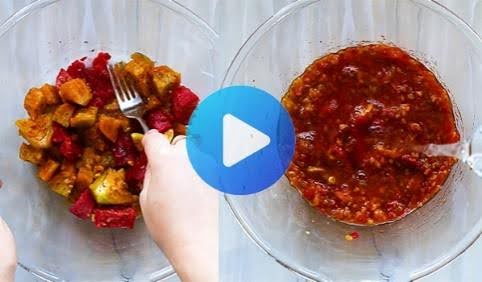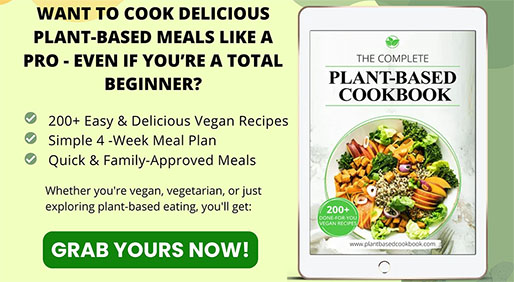Thinking about eating less meat or maybe trying a more plant-focused way of eating has become really popular. As someone who works with women on their fitness and weight loss journeys, I see a lot of interest in this. People wonder if they can still reach their goals, build muscle, and feel strong without eating meat. My answer is absolutely yes. Making the switch, even part-time, can bring some amazing benefits for your health, your fitness, and even your waistline. It’s not about missing out; it’s about discovering a whole new world of delicious and powerful foods.
Let’s explore why you might want to give plant-based eating a try and look at some fantastic foods that can take the place of meat on your plate.
Why Think About Plant-Based Foods
There are lots of good reasons to eat more plants and less meat. Many people I work with find it helps them manage their weight better. Plant foods like vegetables, fruits, beans, and whole grains are often packed with fiber and water but lower in calories compared to fatty meats. This means you can eat satisfying meals that fill you up without overloading on calories. Fiber is a superstar for weight management because it helps you feel full longer, which can stop you from snacking too much between meals. It’s also great for keeping your digestion running smoothly.
Insider Tip: Enjoying Healthy and Flavorful Plant-Based Dishes with The Complete Plant Based Recipe Cookbook
Heart health is another big plus. Diets rich in plant foods are often lower in saturated fat and cholesterol, which are things that can cause problems for your heart when you eat too much of them. Instead, plant foods give you healthy fats, fiber, and lots of vitamins and minerals that support a healthy heart and good blood pressure.
For women specifically, plant-based eating can offer unique benefits. Some plant foods contain compounds called phytoestrogens, which can have a mild effect similar to estrogen in the body. This might be helpful for managing symptoms during menopause or supporting hormonal balance, though more research is always happening. Also, getting enough calcium and vitamin D is crucial for strong bones, especially as women get older. While dairy is often mentioned, many plant foods like leafy greens, fortified plant milks, and tofu are excellent sources of calcium.
Beyond personal health, many people choose plant-based options because it’s kinder to animals and uses fewer resources like land and water compared to raising livestock. While health and fitness are my main focus here, knowing your food choices align with other values can be motivating too.
Protein Power from Plants
One of the first questions I always get is, “But where will I get my protein”. This is a super important question because protein is vital for fitness. It helps repair and build muscle after workouts, keeps you feeling full, and supports a healthy metabolism. The great news is that the plant kingdom is full of protein powerhouses.
You might have heard about “complete” and “incomplete” proteins. Meat is a complete protein, meaning it has all nine essential amino acids our bodies can’t make on their own. Some plant foods are complete proteins too, like soy (tofu, tempeh, edamame), quinoa, and chia seeds. Many other plant foods like beans, lentils, nuts, and grains are considered “incomplete” because they might be low in one or two essential amino acids.
But here’s the secret: you don’t need to eat complete proteins at every single meal. As long as you eat a variety of plant foods throughout the day, your body can gather all the essential amino acids it needs. Think rice and beans, peanut butter on whole-wheat bread, or lentil soup with a side of whole-grain crackers – these combinations create complete protein profiles over the course of your day. So, don’t stress too much about combining specific foods at each meal; focus on variety overall.
My Favorite Plant-Based Meat Swaps
Okay, let’s get to the fun part – the amazing plant foods that can step in for meat. These are some of my go-to recommendations for clients because they are nutritious, versatile, and taste great.
Tofu: The Versatile Chameleon
Tofu is made from soybeans and is probably the most well-known meat alternative. It comes in different firmness levels, from silken (great for smoothies and sauces) to extra-firm (perfect for stir-fries and baking).
- Why I like it: Tofu is a complete protein and a good source of calcium and iron. It doesn’t have much flavor on its own, which is actually a good thing. It acts like a sponge, soaking up marinades and spices beautifully.
- Getting it ready: For firm or extra-firm tofu, pressing it is key. This squeezes out extra water so it can absorb marinades better and get crispier when cooked. You can use a tofu press or just place the block between paper towels or clean cloths and put something heavy on top for about 30 minutes.
- Cooking ideas: Crumble firm tofu for scrambles (add turmeric for color), cube it for stir-fries or skewers, slice it for sandwiches, or bake marinated strips until chewy. Silken tofu blends perfectly into creamy dressings, dips, sauces, or even desserts like chocolate mousse.
Tempeh: The Nutty Powerhouse
Tempeh is another soy product, but it’s made from whole, fermented soybeans pressed into a firm cake. It has a nuttier flavor and a much firmer, chewier texture than tofu.
- Why I like it: Tempeh is also a complete protein and high in fiber. The fermentation process makes its nutrients easier to digest and adds probiotics, which are great for gut health. Its texture holds up well to cooking.
- Getting it ready: Some people find tempeh slightly bitter. Steaming it for about 10 minutes before marinating or cooking can mellow out the flavor.
- Cooking ideas: Slice tempeh thin and pan-fry or bake it until crispy for amazing sandwich fillings or “bacon” strips. Crumble it into pasta sauces or chili. Cube it for stir-fries, curries, or salads. It grills nicely too.
Seitan: The Meaty Master
Seitan (pronounced SAY-tan) is made from wheat gluten, the main protein in wheat. It has an incredibly chewy, dense, and meat-like texture, more so than tofu or tempeh.
- Why I like it: Seitan is extremely high in protein. Its texture makes it a fantastic substitute in dishes where you want something really hearty, like stews, roasts, or “steaks”.
- Getting it ready: Seitan usually comes pre-cooked, often packed in broth or marinade. You can use it straight from the package or add your own seasonings. You can also make it from scratch using vital wheat gluten flour, which is more work but allows for custom flavors.
- Cooking ideas: Slice it for stir-fries or fajitas, chop it for stews, pan-fry slices like cutlets, or even use it to make plant-based sausages or roasts. Important note: Because it’s made from wheat gluten, seitan is not suitable for anyone with celiac disease or gluten sensitivity.
Lentils: The Humble Hero
Lentils are tiny legumes that come in various colors like brown, green, red, and black. They don’t need soaking like dried beans and cook relatively quickly.
- Why I like it: Lentils are packed with protein, fiber, and iron. Iron is especially important for women, as it helps carry oxygen in the blood and prevents fatigue. They are inexpensive and incredibly versatile.
- Getting it ready: Just rinse them well before cooking. Red lentils cook fastest and break down, making them great for thickening soups and curries. Brown and green lentils hold their shape better and are good for salads, burgers, and stews.
- Cooking ideas: Make hearty lentil soup or stew. Use cooked brown or green lentils in salads or grain bowls. Mash them with spices and breadcrumbs to form veggie burgers or loafs (like meatloaf). Use red lentils in Indian dals or creamy pasta sauces.
Beans and Chickpeas: The Pantry Staples
Beans (black, kidney, pinto, cannellini, etc.) and chickpeas (garbanzo beans) are nutritional powerhouses and staples in many cuisines.
- Why I like it: They offer a great combination of protein, fiber, and complex carbohydrates, providing steady energy. They are filling, affordable, and available canned (convenient) or dried (more economical).
- Getting it ready: Canned beans just need a good rinse to remove extra sodium. Dried beans need soaking overnight and then cooking until tender.
- Cooking ideas: Mash chickpeas to make hummus or add them whole to salads and curries. Use black beans or kidney beans in chili, tacos, burritos, or veggie burgers. Blend white beans into creamy soups or dips. The possibilities are endless.
Edamame: The Snackable Soybean
Edamame are young, green soybeans, often sold in the pod or already shelled, usually found in the frozen section.
- Why I like it: Edamame is a complete protein and provides fiber, vitamins, and minerals. It’s super easy to prepare and makes a great snack or addition to meals.
- Getting it ready: Steam or boil edamame in the pod until tender, then sprinkle with salt for a simple snack (you pop the beans out of the pod to eat them). Shelled edamame can be added directly to salads, stir-fries, or grain bowls after a quick steam or boil.
- Cooking ideas: Add shelled edamame to fried rice, noodle dishes, or salads for a protein boost. Blend them into dips or spreads. Enjoy them steamed as a healthy appetizer.
Jackfruit: The Surprising Shredder
Jackfruit is a large tropical fruit. When unripe (green), its flesh has a stringy, shreddable texture very similar to pulled pork or chicken.
- Why I like it: Its texture is amazing for mimicking shredded meats. It’s low in calories and fat. However, it’s important to know that jackfruit is much lower in protein than other meat alternatives.
- Getting it ready: Look for young, green jackfruit canned in water or brine (not syrup). Rinse it well, then cook it in a flavorful sauce (like barbecue sauce) until it’s tender enough to shred easily with forks.
- Cooking ideas: Use shredded jackfruit in barbecue sandwiches, tacos, nachos, or curries. Because it’s low in protein, make sure to pair it with other protein sources in your meal, like beans or lentils.
Mushrooms: The Umami Bombs
While not high in protein like legumes or soy, certain mushrooms have a wonderfully savory (umami) flavor and meaty texture that can satisfy meat cravings.
- Why I like it: Portobello mushrooms are large and dense, perfect for grilling or roasting like steaks or burger patties. Shiitake mushrooms have a rich, savory flavor great for stir-fries and sauces. They provide vitamins and minerals.
- Getting it ready: Simply wipe mushrooms clean with a damp cloth (don’t soak them). Remove tough stems if needed.
- Cooking ideas: Grill or roast large portobello caps whole. Sauté sliced mushrooms with garlic and herbs to add to pasta, omelets, or serve as a side dish. Finely chop mushrooms and mix them into sauces or veggie burger patties for extra flavor and texture.
Store-Bought Plant-Based Meats
You’ve likely seen brands like Beyond Meat or Impossible Foods in stores and restaurants. These products are designed to look, cook, and taste very much like ground beef, burgers, or sausages.
- Why I like it: They offer convenience and can make the transition away from meat easier for some people, as the taste and texture are very familiar. They are usually high in protein.
- Things to consider: These are often highly processed foods and can be high in sodium and saturated fat (often from coconut or canola oil). They can also be more expensive than whole-food alternatives like beans or tofu. I generally advise using these more as occasional treats rather than everyday staples. Focus on whole or minimally processed plant foods most of the time for the biggest health benefits.
Don’t Forget These Important Nutrients
When you reduce or eliminate meat, there are a few key nutrients you need to pay a little extra attention to. It’s totally possible to get everything you need from plants, but it requires some awareness.
- Vitamin B12: This vitamin is crucial for nerve function and making red blood cells. It’s primarily found in animal products. If you’re eating little or no meat, dairy, or eggs, you’ll need a reliable source of B12. Look for fortified foods like plant milks, breakfast cereals, and nutritional yeast, or take a B12 supplement. This is one nutrient I strongly recommend supplementing if you are fully plant-based.
- Iron: As mentioned, iron carries oxygen in your blood. While plant foods contain iron (non-heme iron), it’s not absorbed as easily as the iron from meat (heme iron). To boost absorption, eat iron-rich plant foods (lentils, beans, tofu, spinach, fortified cereals) along with foods high in vitamin C (citrus fruits, bell peppers, broccoli, tomatoes). Avoiding coffee and tea with meals can also help, as they can hinder iron absorption. This is particularly important for women, especially during childbearing years.
- Calcium: Essential for bone health. Good plant sources include fortified plant milks and juices, tofu made with calcium sulfate, leafy greens (kale, collard greens, bok choy), almonds, and tahini.
- Omega-3 Fatty Acids: These healthy fats are important for brain and heart health. While fatty fish is a well-known source, you can get ALA (a type of omega-3) from plant foods like flaxseeds (ground), chia seeds, hemp seeds, and walnuts. Your body can convert some ALA into the more active forms (EPA and DHA), but the conversion rate can be low. Some people choose to take an algae-based EPA/DHA supplement.
- Vitamin D: Important for calcium absorption and immune function. Our bodies make vitamin D from sunlight, but many people don’t get enough sun exposure, especially in certain climates or during winter. Food sources include fortified plant milks and cereals. A supplement might be necessary for many people, regardless of diet.
- Zinc: Needed for immune function and cell growth. Found in legumes, nuts, seeds, oats, and tofu. Soaking or sprouting beans and grains can improve zinc absorption.
Tips for Making the Switch Smoothly
Changing eating habits takes time. Be patient with yourself. Here are some tips that help my clients:
- Start Small: You don’t have to go all-in overnight. Try “Meatless Mondays” or aim to make one meal per day plant-based. Gradually increase from there.
- Focus on Adding, Not Just Taking Away: Instead of thinking about what you can’t eat, focus on all the delicious plant foods you can add – colorful vegetables, fruits, beans, lentils, nuts, seeds, and whole grains.
- Plantify Your Favorites: Think about your favorite meals and how you can adapt them. Use lentils or mushrooms in spaghetti sauce instead of ground beef. Make chili with beans instead of meat. Use tofu or chickpeas in curries. Swap chicken for baked tempeh in salads.
- Learn Basic Cooking Skills: Knowing how to press tofu, cook lentils, or roast vegetables makes things much easier and tastier.
- Explore New Flavors: Try recipes from cuisines that traditionally use lots of plant foods, like Indian, Thai, Mediterranean, or Ethiopian.
- Plan Ahead: A little meal planning or prepping (like cooking a batch of beans or grains on the weekend) can save you time and ensure you have healthy options ready.
- Don’t Aim for Perfection: It’s okay if you slip up or decide that being 100% plant-based isn’t for you. Eating more plant foods is still a huge win for your health.
Plant Power for Your Fitness Goals
Eating more plants can be fantastic for reaching your weight loss and fitness goals. The high fiber content keeps you full and satisfied, helping you manage calorie intake naturally. Focusing on whole plant foods means you’re getting lots of nutrients without excess unhealthy fats or empty calories.
For fueling workouts, complex carbohydrates from whole grains, beans, and starchy vegetables provide sustained energy. Plant-based proteins like tofu, tempeh, lentils, and beans are excellent for muscle repair and growth after exercise. Remember to eat a variety of protein sources throughout the day to get all the essential amino acids your muscles need.
The key is choosing wisely. Opt for whole, unprocessed foods most of the time. While processed plant-based burgers or nuggets can be convenient, they shouldn’t be the foundation of your diet if health and weight loss are your goals. Fill your plate with vegetables, fruits, legumes, whole grains, nuts, and seeds for the best results. You’ll likely find you have more energy, recover better from workouts, and reach your goals feeling strong and vibrant.
You Might Be Interested In: Exploring Delicious Vegan Recipes With This Cookbook
Related YouTube Video
Final Thoughts
Exploring plant-based eating doesn’t mean you have to give up satisfying meals or worry about missing out on nutrients. As we’ve seen, there’s an incredible variety of plant foods that can provide protein, texture, and amazing flavor. From versatile tofu and tempeh to hearty lentils and beans, these alternatives can fuel your body, support your fitness journey, and help you manage your weight effectively.
Remember to focus on whole foods, ensure you’re getting key nutrients like B12 and iron, and introduce changes gradually. Eating more plants is a powerful way to invest in your long-term health and well-being. Give some of these alternatives a try – you might just discover some new favorite foods.







